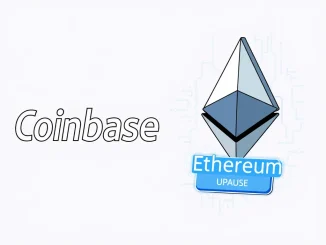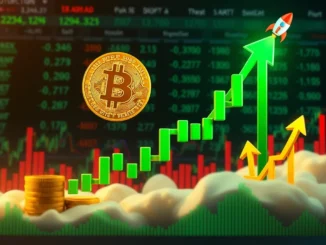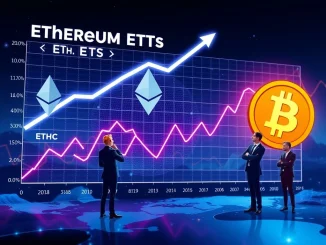
The world of cryptocurrency is constantly buzzing with activity, and keeping an eye on large movements can offer valuable insights. A recent significant event caught the attention of market watchers: a massive ETH transfer involving one of the leading Layer 2 scaling solutions and a major crypto exchange.
What Just Happened with This Significant ETH Transfer?
According to data reported by blockchain tracking service Whale Alert, a substantial amount of Ethereum (ETH) was recently moved. Specifically, 81,000 ETH was transferred from the Arbitrum network to the Binance exchange. At the time of the report, this transaction was valued at approximately $212 million, highlighting the sheer scale of the movement.
This kind of large-scale transaction often signals potential market activity. When a significant amount of a cryptocurrency is moved from a Layer 2 solution like Arbitrum to a central exchange like Binance, it can be interpreted in several ways by market participants.
Why Does an Ethereum Whale Moving ETH to Binance Matter?
Movements of this size are typically associated with large holders, often referred to as ‘whales’. An Ethereum whale moving 81,000 ETH is a noteworthy event because it concentrates a large amount of supply in one place, potentially influencing market dynamics. Here’s why such a transfer from Arbitrum to Binance is significant:
- Potential Selling Pressure: The most common interpretation of large transfers to exchanges is that the holder intends to sell some or all of the assets. Bringing ETH onto Binance makes it readily available for trading against other cryptocurrencies or fiat currencies.
- Market Volatility: If the whale decides to sell, a large order could potentially impact ETH’s price, especially if market liquidity is low at that specific moment.
- Strategic Maneuvering: Not all transfers to exchanges are for immediate selling. A whale might move funds to an exchange to participate in staking programs, lending, or to have liquidity ready for trading opportunities or arbitrage.
- Exiting Layer 2: Moving funds from Arbitrum back to a central exchange involves bridging the assets from the Layer 2 network to the Ethereum mainnet, and then depositing them onto the exchange. This suggests the holder might be consolidating assets or changing their strategy regarding Layer 2 usage.
Breaking Down the Details: Arbitrum and Binance
Let’s quickly look at the entities involved in this ETH transfer:
- Arbitrum: A leading Layer 2 scaling solution for Ethereum. It aims to increase transaction speed and reduce costs by processing transactions off the main Ethereum chain while inheriting its security. Moving ETH onto Arbitrum is typically done to utilize its faster, cheaper environment for DeFi, NFTs, or other applications.
- Binance: The world’s largest cryptocurrency exchange by trading volume. It provides a platform for users to buy, sell, and trade a vast array of cryptocurrencies. It also offers various services like staking, lending, and derivatives trading.
The flow of funds from a scaling solution like Arbitrum to a central crypto exchange like Binance is a pattern worth observing for traders and investors.
What Could Be Next After This Ethereum Whale Move?
Predicting the exact intentions of an Ethereum whale is impossible without direct knowledge. However, market participants will be watching for potential follow-up actions. Will this lead to a large sell-off on Binance? Or is the whale simply repositioning assets for other strategies available on the exchange?
While a $212 million transfer is significant, the overall daily trading volume on Binance and the total market capitalization of Ethereum are vast. The impact of this single move depends heavily on how the whale chooses to act next and the broader market conditions.
In Conclusion: Tracking Large ETH Transfers
The reported 81,000 ETH transfer from Arbitrum to Binance by Whale Alert is a classic example of the kind of ‘whale activity’ that market observers track closely. While not a guaranteed predictor of price movements, such large flows onto exchanges often precede increased volatility or significant trading action. It serves as a reminder for market participants to stay informed about large on-chain movements and consider their potential implications for market supply and demand dynamics on major platforms like Binance.



